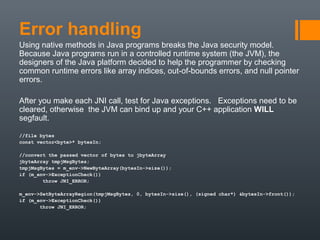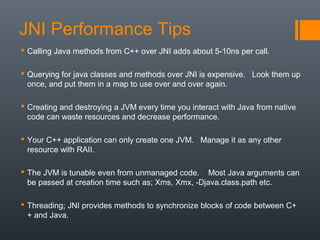The document discusses using the Java Native Interface (JNI) to call Java code from C++. It outlines the four main steps: 1) write the Java code, 2) compile the Java code, 3) write the C++ code to create a JVM, lookup and call the Java methods, and 4) run the native C++ application. Key aspects covered include using JNI data types, signatures for classes and methods, converting between Java and C strings, handling references and errors. Performance tips are also provided such as caching lookups and managing the JVM as a resource.
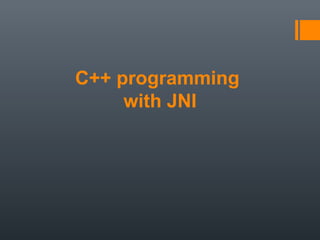
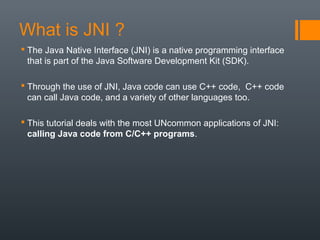
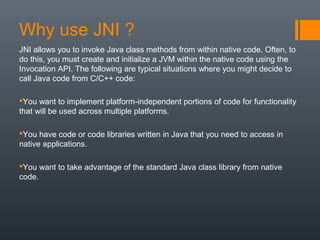


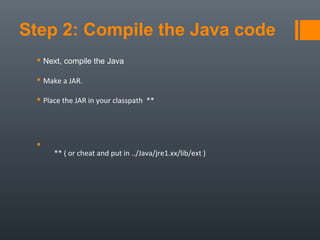
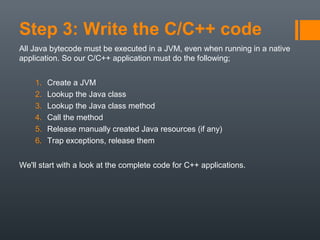
![#include <jni.h>
int main() {
JavaVMOption options[1];
JNIEnv *m_env;
JavaVM *m_java;
JavaVMInitArgs vm_args;
//constructor to create the JVM connection
JavaVMInitArgs vm_args;
JavaVMOption options[1];
long jvmStatus;
//================== prepare loading of Java VM ============================
options[0].optionString = "-Djava.class.path=. -Xms=50M -Xmx100M";
vm_args.version = JNI_VERSION_1_8; // minimum Java version
vm_args.nOptions = 1; // number of options
vm_args.options = options;
//=============== load and initialize Java VM and JNI interface =============
jvmStatus = JNI_CreateJavaVM(&m_java, (void**) &m_env, &vm_args);
Declare JVM variablesDeclare JVM variables
Set JVM optionsSet JVM options
Create the JVMCreate the JVM](https://image.slidesharecdn.com/cprogrammingwithjni-170405155703/85/C-programming-with-jni-8-320.jpg)

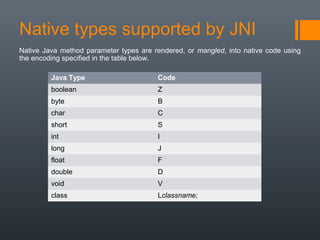
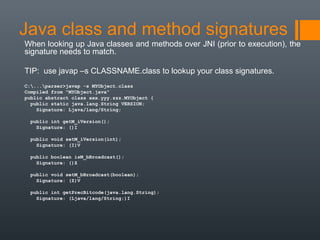
![Java strings versus C strings
Java strings are stored as sequences of 16-bit Unicode characters,
while C strings are stored as sequences of 8-bit null-terminated
characters. JNI provides several useful functions for converting
between and manipulating Java strings and C strings. The code
snippet below demonstrates how to convert C strings to Java strings,
and back.
/* convert a C string to a Java String */
char[] str = "To be or not to be.n";
jstring jstr = m_env- >NewStringUTF( str);
/* convert a Java String to a C string */
const char* msg_str = m_env- >GetStringUTFChars(jstr , 0);](https://image.slidesharecdn.com/cprogrammingwithjni-170405155703/85/C-programming-with-jni-12-320.jpg)

